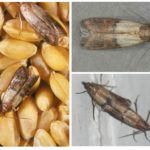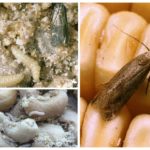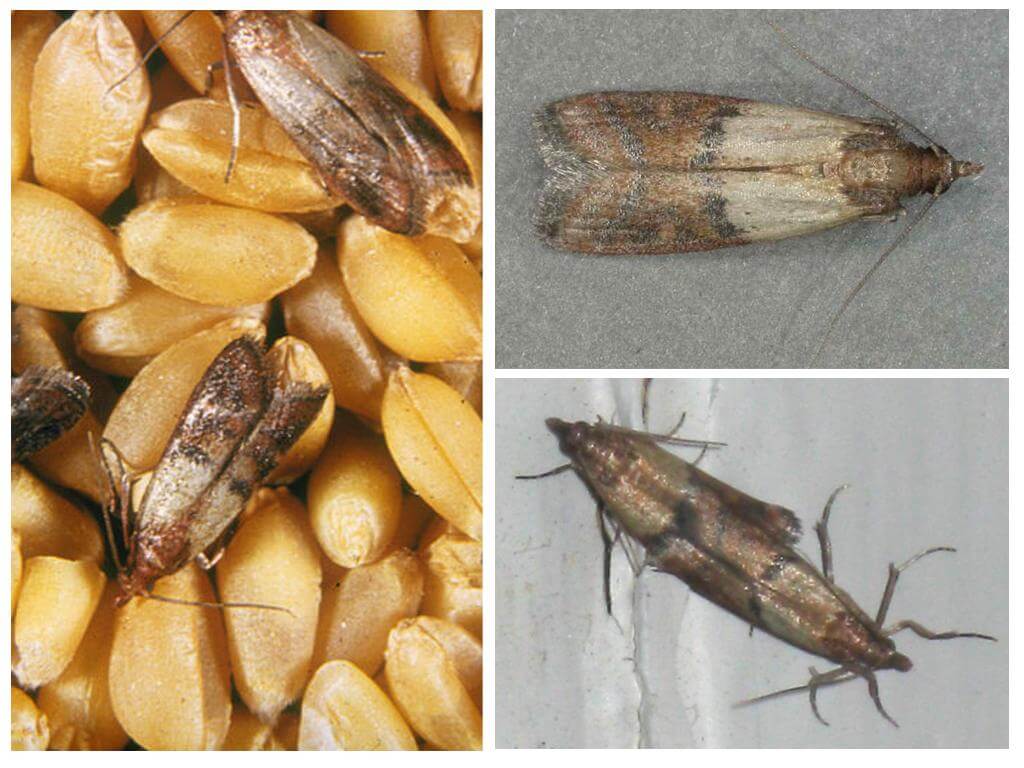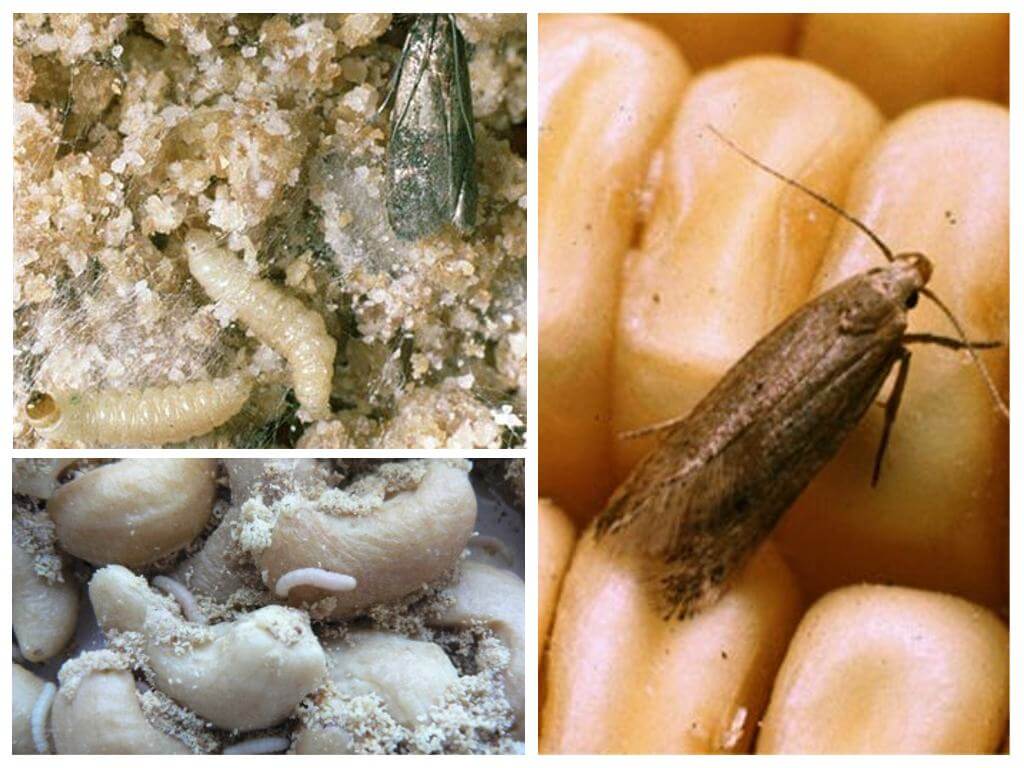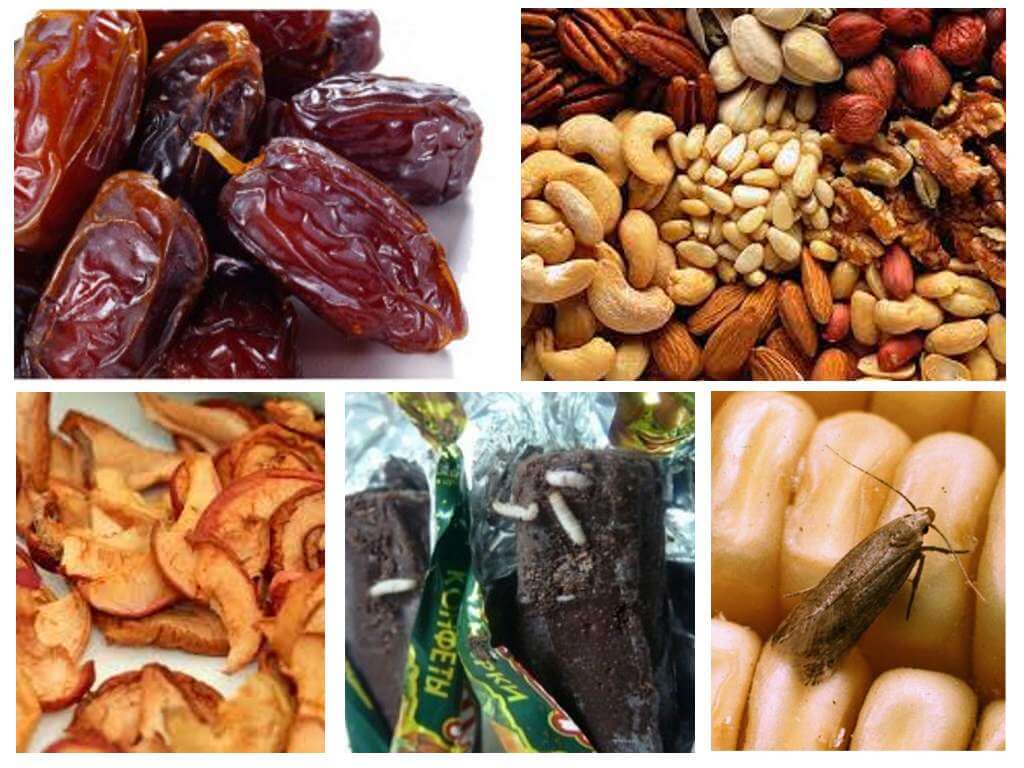Barnhouse
Content
- Barnhouse
- Barnhouse
- What does the barn fire eat?
Mill mill - a butterfly that belongs to one of the largest families of Lepidoptera - ognevke present. The family has about 6,200 species of butterflies. The birthplace of this species is presumably India, so the butterfly is also called the southern granary or grain moth.
Description of the species and the life cycle of the mill butterfly
The mill mill is a small butterfly with narrow front wings.Their length is 3 times the width. The wing has a curved front. The middle part of the front wings is yellowish-whitish, and the front and back half is ocher with dark small specks. The mill moth on the photo is different from the rest of the family of the graphic two-color color of the front wings.
Hind wings very light, with dark, pubescent edge. The head of the imago is covered with smooth brown scales that protrude in the form of a cone in the front.
Caterpillars are yellowish-white with ocher head, with two oblong spots at the base. The size varies from 1.0 to 1.5 cm.
The butterflies of the southern barn moth mate 1-2 days after leaving the cocoon. The butterfly, ready to pairing, is easily recognized by the raised abdomen. Males actively move, flying up to the female, circling around her.
After fertilization, the female will begin laying eggs in a few days. In laying 1-30 eggs, which the butterfly gently presses to the support or dried fruit, kernels for firm fixation. The butterfly can lay 150-200 eggs. The egg is oval, whitish with a cellular surface. During development, the egg shell grows turbid, a fully formed caterpillar shines through it. When the air temperature is above 15 ° C, the complete transformation of eggs takes 3-4 days.If the temperature drops, then the period increases by 4 times.
The caterpillar crawls actively, choosing a place that is convenient for feeding and vital activity and causing harm to products. Biting into the reserves, it forms a thin tube of silky threads, covered with excrement from above. In it, she lives and eats, gnawing a wide chamber in grains or dried fruit. In the photo - the caterpillar mill mill.
Important!
Under the condition of high temperature in the granary, the hatching eggs of the caterpillars cobweb the upper layer of stocks to a depth of 10–15 cm. As the temperature decreases, the caterpillars go deeper, reaching 1.5–2 m. the longest and, depending on the temperature, takes from 9-26 days. In adverse temperature conditions, it can take up to 1 month.
During pupation, the caterpillar builds a cocoon, which is attached in a secluded place. The first molt occurs inside the cocoon. Sometimes the caterpillar does not make a cocoon, and the pupae lie open. The duration of pupation also depends on the temperature - the higher it is, the more friendly the hatching and more generations can pass in one season.To deal with massive infection is much more difficult.
Feed caterpillars mill ognevki
The mill mill is a pest of grain, dry fruit, confectionery and flour products. Together with such granary pests as grain moth, grain hruschak, granary weevil and other insect pests, the mill moth is capable of destroying a large supply of grain by gnawing on the germ.
There is a difference in the size and timing of metamorphosis, not only depending on air temperature. The southern barn mound, which grows in dry fruits, berries, and fruits, is much larger in size than the one that feeds on flour.
The value of the insect in the economy
Mill moth damage not only food and feed grains, cereals and flour. Cereal moth eats also:
- dry fruits (dried apricots, figs, dates, apples, etc.);
- nuts and peeled sunflower seeds;
- confectionery, including candy, chocolate;
- flour and flour products.
Southern barn flare can damage not only food in warehouses and storage facilities.Mill mounts are found in kitchens, in the apartment houses, damaging collections of insects, herbaria, old honeycombs.
Barn flares in one generation can ruin a huge amount of grain and other products. Infected with feces and cobwebs reserves are not suitable for use because they can not be cleaned.
Methods of dealing with the mill mire
Methods of preventive pest control include:
- cleaning and preparation of storage facilities and warehouses for grain;
- wet or aerosol treatment with contact insecticide solutions;
- preparation for grain storage:
- drying grain and flour to medium humidity;
- cleaning of broken and damaged grains;
- gas treatment (fumigation or aeration);
- spraying liquid disinfestation.
The moth family does not tolerate low temperatures, so pest control methods include cooling stocks. Insect eggs die when they are very hot. Frying grains using a certain mode is one of the types of insect control. Control measures may include several methods. Choose the method that is suitable for disinfecting a certain type of product.

